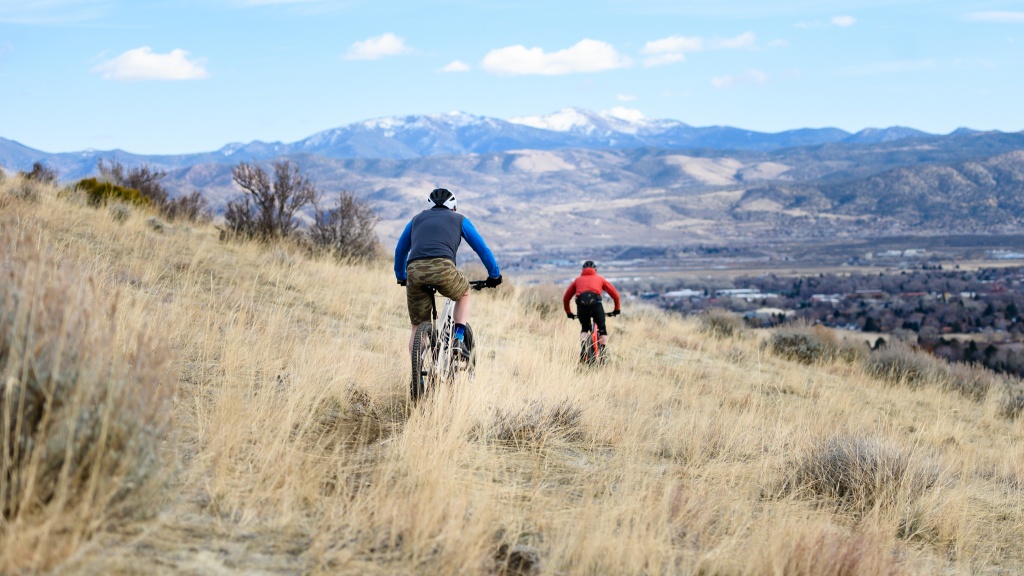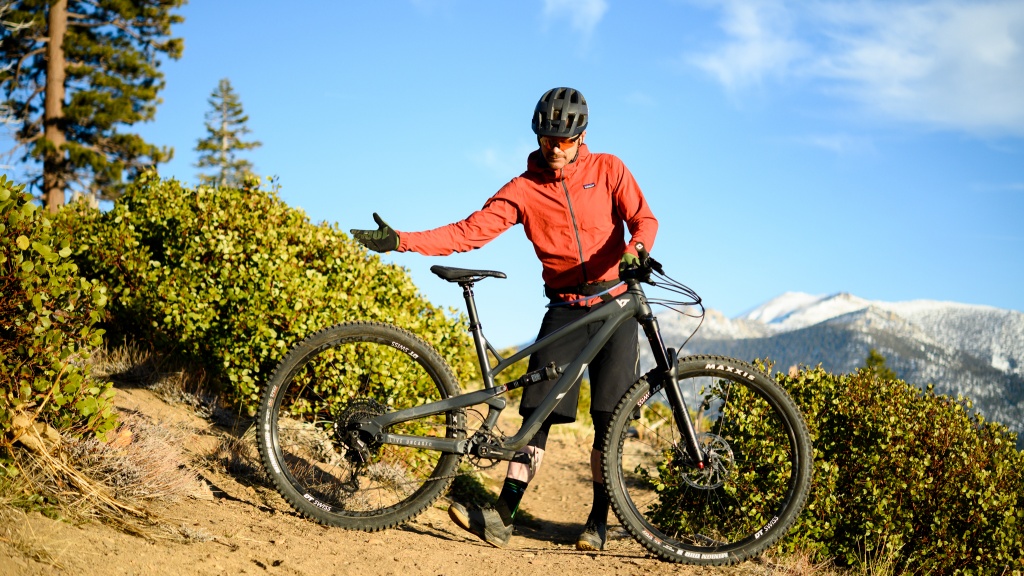Over the course of several months, we had three professional mountain bike testers take each of the models in our test selection for a number of rides. Each tester chose repeatable cross-country style test laps 10 to 15 miles in length that included every element of mountain bike riding. Each lap offered the full spectrum of riding, from grinding climbs to eye-watering descents, smooth hardpack, chunky rock gardens, and everything in between. These repeat laps help us create a baseline for each bike's performance when ridden back to back or even several days apart. We don't go easy on these bikes either, instead, it's our goal to find their limits in an effort to expose their strengths and weaknesses. Catching air, railing corners, smashing through rock gardens, we ride these bikes as if they are our own to find out where they excel and where they don't. Our testers keep detailed notes as they scrutinize every aspect of each bike's performance and how it relates to its design, geometry, and components. The bikes are then rated on three metrics: fun factor, downhill performance, and uphill performance, to help determine our overall favorites.
Fun Factor
The most fun wins, plain and simple. Riding bikes is always fun, of course, but which bike is the most fun is important because that's why we ride them in the first place. People have somewhat differing opinions about what makes a bike more fun than another, but generally speaking, our testers found themselves in agreement about which bikes are the most fun to ride. How do we rate this metric? It isn't the most scientific process out there, it was largely based on the size of the tester's smile at the end of the ride, as well as their willingness to keep riding that bike. Some bikes are so much fun that you just want to keep riding them, or you reach for them every chance you get, while some of the others you'd rather not swing a leg over ever again. Typically, the most fun bikes to ride were the ones with the best all-around performance, comfortable and balanced, and good at just about everything.
Downhill Performance
To test downhill performance, we rode the bikes downhill as much as we could. We chose trails that provided a good mix of trail surfaces and types, from smooth hardpack to loose and chunky rock gardens, with a mix of fast open sections and tighter, more technical riding. Testers had the opportunity to test all of the bikes on the same trails, often back to back, so they could get an impression of how each bike's performance compared to the next. Each model's geometry, suspension design, and component spec handles differently and these downhill laps were perfect for identifying the strengths and weaknesses of each model. The Testers' impressions and analysis of the factors that affect the way these bikes perform downhill led us to our ratings of the different models.
Uphill Performance
Since we spend more time riding our bikes uphill than down, we feel that the uphill performance of a mountain bike is very important. On our cross-country laps, we had the opportunity to test each bike's climbing performance on a variety of trail types and conditions. We made sure to include some steep, punchy sections, tight switchbacks, and technical obstacles to evaluate performance in all types of climbing situations. Factors such as frame geometry, suspension, and component spec all affect the way a bike performs while climbing and were taken into account while out on the trail. The bikes were ridden on the same trails, sometimes back to back, to provide testers with a direct comparison of each model's uphill capabilities. Each tester's analysis of uphill performance resulted in our final rating scores.
Build
The build, or component specification, of a mountain bike is determined by the manufacturer and is one of the primary factors that determine the retail price as well as how it performs out on the trail. We don't rate the bikes based on their build, but we do go into detail about the highs and lows of each bike's component spec and how that affects its performance. Full suspension mountain bikes in this price range typically lack the carbon fiber bling and higher-end components found on bikes that cost 2 to 4 times as much. That said, manufacturers are doing a great job of trickling down modern technology into their less expensive components. For example, just a couple of years ago, you would have been hard-pressed to find a complete full-suspension mountain bike for under $3000 that came with a dropper seat post, but now most of the bikes in our test selection come with them. Similarly, drivetrain technology and cockpit setups, including handlebars and grips, saddles, brakes, wheels, and tires, have all come a long way for the more budget-conscious mountain biker.
Conclusion
When our testing finished and the dust settled, we compared our tester's notes and impressions and compiled our findings in this comprehensive comparative review. We hope the information presented here helps you find the best mountain bike under $3000 for where and how you ride and your budget.





